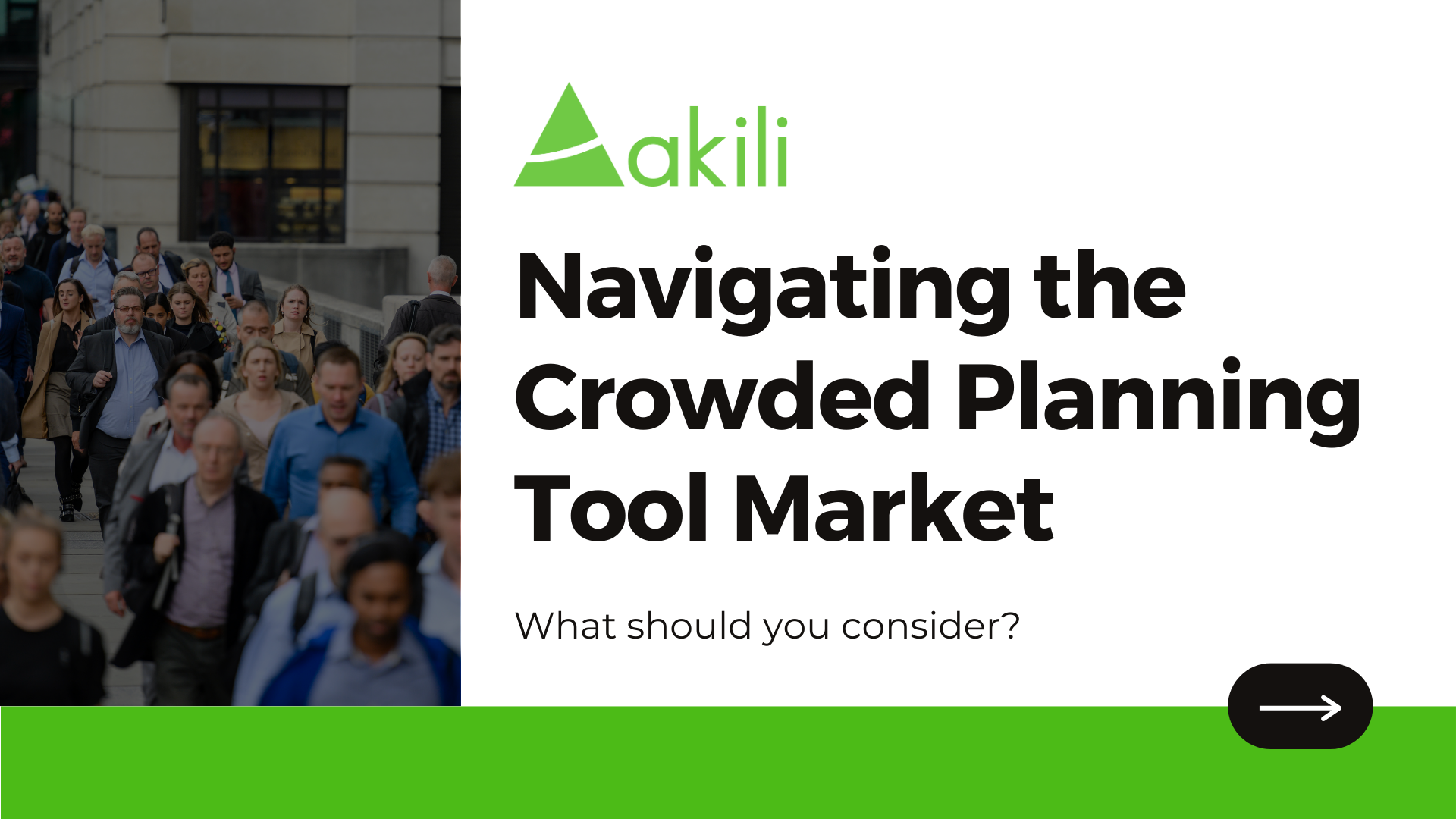The market for planning tools has exploded in recent years with each solution claiming to be the magic bullet to all your planning challenges. But in reality, there is no one-size-fits-all planning software that can effectively satisfy every organization’s needs. The demand for flexible, easy-to-use, integrative tools that adapt to specific use cases and data sources is higher than ever. As such, effective planning software must now be as agile as the businesses it supports and blend seamlessly into any operational landscape.
With so many options available, selecting the right planning tool is no small feat. It begins with identifying what you truly need the tool to do. While some organizations prioritize modeling and in-depth scenario planning, others need tools for real-time reporting and quick decision-making. This choice often boils down to how much time your team spends modeling data versus simply reporting it. A tool that’s great for detailed data modeling might feel too cumbersome if your primary goal is to speed up monthly reporting. Choosing a tool that aligns closely with your intended use case will prevent frustration and optimize your workflows.
The Role of the User Community
Your organization’s user base plays a massive role in determining which tool is right for you. Consider who will be using the tool daily—planners, analysts, or various teams with different comfort levels of technology. Some planning tools are tailored for experts and offers a high degree of customization and flexibility, while other solutions cater to a broader audience and prioritize ease of use. If your goal is to enable cross-functional collaboration, you’ll want a tool that’s accessible and mutually beneficial to all users.
Integration and Data Compatibility
In today’s connected environment, the ability to integrate with data sources is critical. Planning software that can’t communicate with other systems, or that forces you to rely on manual imports and exports, will quickly feel outdated. When evaluating tools, pay close attention to their integration capabilities. A strong planning platform should not only handle your data sources, but also bring them together into one cohesive view. The last thing you want is a solution that is just another tool that users will have to access to gain a complete picture.
Speed and Responsiveness
For many organizations, timing is everything. If you’re frequently running reports or need access to real-time data to make decisions, your tool has got to be responsive. While traditional systems have a time lag between data entry and report generation, many modern platforms offer real-time data experience. Prioritizing a tool that aligns to the speed you need access to your data, ensures your insights are actionable the moment they’re needed.
Scalability and Long-Term Fit
A major consideration when choosing a planning tool should be scalability. Can this tool grow with my organization? If you’re already questioning whether it’ll serve your needs a few years down the line, it’s worth looking elsewhere. The right planning tool should accommodate your current needs, while offering the flexibility to scale up as needed. This can be driven by supporting additional users, handling more data, or even offering features that can become valuable as your organization evolves.
When assessing planning tools, consider them a long-term investment. Think about the hidden costs of onboarding, training, change management, and system maintenance. The ideal tool will support your current processes and adapt to your evolving requirements.
Conclusion
The reality is that today’s planning environment is too dynamic and complex for any tool to be the silver bullet. Consider prioritizing your organization’s unique needs, user base, speed requirements, and future growth plans. In a flooded market, the best choice is the one that allows you to stay agile, scales effortlessly as your organization grows, and continues to add value across the entire organization.
Author: Jason Sangworn

